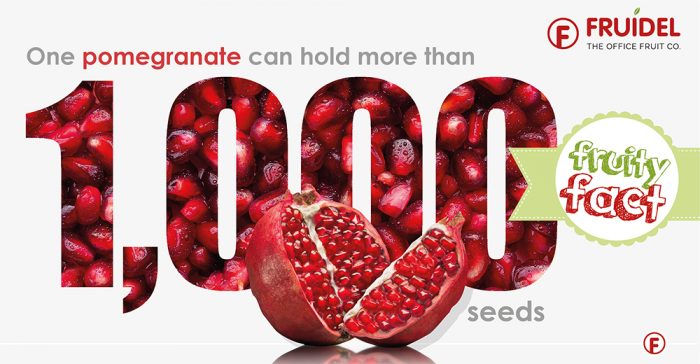Welcome to Facts Vibes, where we explore fascinating pomegranate fun facts. From its rich history to its health benefits, join us as we uncover the juicy secrets of this delectable fruit. Prepare to be amazed by the hidden wonders of the pomegranate!
Exploring the Fascinating World of Pomegranate: Fun Facts to Know
Exploring the Fascinating World of Pomegranate: Fun Facts to Know
Pomegranates are believed to have originated in the region of modern-day Iran and have been cultivated for thousands of years. This fruit is not only delicious but also packed with nutrients and antioxidants that offer numerous health benefits. In fact, pomegranate juice has been studied for its potential to lower the risk of heart disease and reduce blood pressure.
The vibrant red color of pomegranate arils comes from powerful antioxidants called polyphenols, which have anti-inflammatory properties. These compounds are also found in the peel and white membranes of the fruit, making every part of the pomegranate valuable for health and wellness.
Aside from its nutritional benefits, pomegranates also hold cultural significance in many regions around the world. In some traditions, the pomegranate symbolizes fertility, abundance, and prosperity. It’s no wonder that this fruit has made its way into various cuisines, art, and folklore throughout history.
In the context of exploring new flavors and incorporating healthy foods into your diet, consider adding pomegranate to your culinary repertoire. Whether you enjoy it on its own, as a topping for salads, or as a flavorful addition to savory dishes, the pomegranate offers a delightful burst of flavor and nutrition.
Overall, the pomegranate’s rich history, nutritional value, and cultural significance make it a truly fascinating fruit worth getting to know better.
Most popular facts
Pomegranates are considered a symbol of fertility and prosperity in many cultures.
Pomegranates are considered a symbol of fertility and prosperity in many cultures.
The average pomegranate contains about 600 seeds, known as arils.
The average pomegranate contains about 600 seeds, known as arils.
Pomegranates are one of the oldest known fruits, dating back to ancient times.
Pomegranates are one of the oldest known fruits, dating back to ancient times.
One pomegranate can provide about 40% of the recommended daily intake of vitamin C.
One pomegranate can provide about 40% of the recommended daily intake of vitamin C.
The juice from pomegranates is known for its high levels of antioxidants.
Yes, pomegranate juice is indeed known for its high levels of antioxidants.
Pomegranate trees can live for over 200 years and continue to bear fruit.
Pomegranate trees can live for over 200 years and continue to bear fruit.
Pomegranates are native to regions in modern-day Iran and have been cultivated for thousands of years.
Pomegranates are native to regions in modern-day Iran and have been cultivated for thousands of years.
Pomegranate juice has been studied for potential health benefits, including heart health and anti-inflammatory properties.
Pomegranate juice has been studied for potential health benefits, including heart health and anti-inflammatory properties.
In Greek mythology, pomegranate seeds are associated with the story of Persephone and the underworld.
Yes, pomegranate seeds are associated with the story of Persephone and the underworld in Greek mythology.
Pomegranates are a versatile ingredient, used in both sweet and savory dishes.
Pomegranates are used in both sweet and savory dishes, showcasing their versatility as an ingredient.
Pomegranate flowers are bright red and often used in decorative arrangements.
Pomegranate flowers are bright red and often used in decorative arrangements.
Some studies suggest that pomegranate consumption may have potential benefits for reducing blood pressure.
Studies suggest that pomegranate consumption may have potential benefits for reducing blood pressure.
The rind of a pomegranate can be used to make natural dyes.
Yes, the rind of a pomegranate can indeed be used to make natural dyes.
Pomegranates are often featured in holiday celebrations and religious rituals in various cultures.
Pomegranates are often featured in holiday celebrations and religious rituals in various cultures due to their symbolic significance and cultural associations.
Pomegranates are a source of dietary fiber, important for digestive health.
Pomegranates are a source of dietary fiber, which is important for digestive health.
In conclusion, pomegranates are not only delicious but also packed with nutrients and have a rich history dating back centuries. Their versatility makes them a great addition to a variety of dishes and drinks. Whether you enjoy them for their health benefits or simply for their unique flavor, there is no denying that pomegranates are truly a remarkable fruit.
